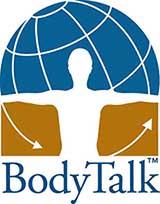As the Jacaranda's Fall
As the Jacarandas fall it is an indication that we are heading towards the end of the year and exam time.
The final school term of the year is upon us and pressure has started to mount on our children to complete the year on a high.
At any age children are now prone to stress and anxiety. It is important to look out for the signs that your child is under stress. Children become more irritable and irrational as they start to reach exam week and when assignments and exams are due at the same time. Each child reacts differently to pressure and stress.
This year my son, has started Year 7, first year of high school and at a new school. It is a lot to learn, new school, different friends and different procedures. He starts the term with all eagerness but he likes to be on top of his assignments and exams.
My son and I do not like change and it has taken us time to adjust to a new routine. The problem arises when we get to the second last week of term (assessment week) which is called melt down week. This week is when most of the exams and assignments are due. If I suggest any ideas or change to the routine, I can sense his frustration and non-acceptance. He gets quite upset at you and you must make sure you provide a calm and to the point idea while communicating with him. Also as a parent I need to make sure that I am not getting upset and that I listen to his points of view. Every school day, my husband and I ask him how his day was and what was a highlight of the day and then ask what homework is due and if he needs any help. Communication is the key and works two ways.
Debbie Scarlett
Melissa’s Thoughts
I think back to when I was at school and I don’t remember myself or those around me having meltdowns as much as I see and hear from parents and their children today. There seems to be more pressure on students throughout the year and the exam period becomes the icing on the cake. The feedback I receive from parents that bring their children to me for BodyTalk is that they are calmer and they are not reactive – at least for a few months until everything builds up again.
One of the most effective techniques of BodyTalk is called Cortices technique which is designed to improve and balance the communication between the two halves of the brain. (It’s like hitting the reset button on your brain’s computer). This will improve the efficiency of the brain - thereby improving overall health. Specific immediate effects include improvements in thinking ability, memory, concentration, stress reduction, feelings of wellbeing, and general physiological functioning of the body.
This technique takes only a couple of minutes to do and my suggestion is to do it before your children go to school and again when they come home. I have some students that have got to the point where they know they feel better after the technique so they tell me that they do it themselves at school when they are stressed!
A quick technique to help your kids
1. Placing one hand on your child’s head at the base of the skull where it meets the neck. (Keep fingers and thumb together during this technique to avoid missing any areas of the brain.) While holding that position lightly tap the head, then the sternum (or mid-back if preferable), alternating for two full breath cycles. Focus on connecting all points of the right hemisphere of the brain to the left hemisphere, and high-lighting circulation and communication between them.
2. Now move your hand up onto the head to the position just above the one you just used. (You are going to systematically cover the whole head, one hand-width at a time.) In the new position, tap out the head and then the sternum, alternating for two full breaths.
3. This main objective is to make sure that the entire brain is covered. The hand positions may overlap to ensure that no areas are left untouched. Maintain deep (but not forced) breathing throughout this entire procedure.This procedure is repeated until you have covered the whole midline of the head from the base of the skull to just above the eyebrows. This could mean three hand widths for a large hand to cover a small head or five hand-widths for a small hand to cover a larger head.
4. Now cover the sides of the head to balance the temporal lobes. Preferable, have your child cover both sides of his or her head with their own hands. Or you can cover both sides of their head with your hands. Now tap out head and sternum while the person takes two full breaths. (If you are doing it the second way, let go with one of your hands to tap the head and sternum [or back].)
